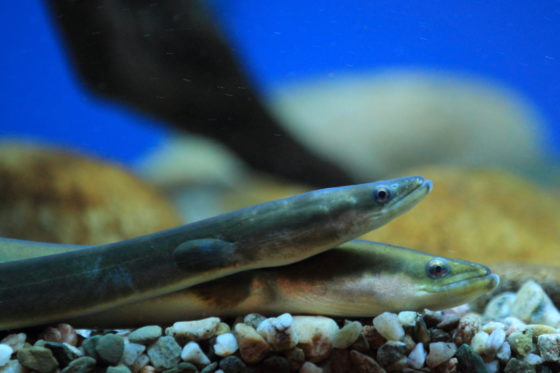
Today, the International Council for the Exploration of the Sea, ICES, published the results of its evaluation of the national progress reports on implementation of their Eel Management Plans. It shows that attainment of the EU recovery objective for the critically endangered European eel is lower today than in 2012. Reported mortality has decreased in most management areas, but has increased in others. Also, reporting continues to be poor, with only 11 of 18 Member States submitting full reports.
ICES has evaluated the progress reports submitted by Member States in 2021 as part of the reporting requirements under the so-called eel regulation[1], focusing in particular on the objective of the regulation – the escapement of at least 40% of the estimated pristine silver eel biomass[2] – and mortality.
The evaluation shows that no overall progress has been made in reaching the objective on EU level. Silver eel escapement is not increasing, and in several areas it has decreased since Member States first reported on implementation in 2012.
Only 9 out of a total of 84 EU eel management units (EMUs) met or exceeded the escapement target – fewer than the 16 EMUs that met the target in 2012. One EMU shows a consistently increasing trend in silver eel escapement. Regarding eel mortality, the picture is more mixed with lower reported mortality in 20 of the EMUs compared to 2012, but higher mortality in 10 EMUs.
– The results of this evaluation really call the EU eel recovery measures into question. The eel regulation was adopted in 2007, and still we see no recovery. The EU and its Member States must adhere to the scientific advice and the objectives of the Common Fisheries Policy and close the fishery, as well as urgently address measures to Improve access to good habitats and improve water quality, says Niki Sporrong, European eel project manager at FishSec.
ICES was expected to provide advice also on which measures were the most effective in delivering eel recovery, but concluded that this was not possible due to the general lack of improvement, and also because the majority of measures are either not directly affecting escapement biomass and mortality or not sufficiently monitored. However, it suggests focusing on measures that are likely to directly reduce mortality and increase escapement in the future.
Several key Member States did not submit a report, or reporting was incomplete, among them France and Italy. Overall, only 11 of 18 Member States, including 34 out of a total of 84 EU eel management units (EMUs) reported on both biomass and mortality indicators.
Most EU countries continue to allow fishing for eel, despite that the species has been classified as “Criticially Endangered” by the International Union for the Conservation of Nature (IUCN) since 2008, and is on the European Red List of Freshwater Fishes.
This evaluation is seen as a critical step in the process of establishing further measures to aid eel recovery in the EU, after the ICES advice of zero catch in all habitats and for all life stages in November 2021. ICES also concluded that the status of the European eel populations remains critical.
This advice was not heeded to by the European Commission and the Council in December, when only a strengthening of the current three-month eel fishing closure was agreed. Since then, the Commission has consulted the Member States and the Advisory Councils on how to best implement the 2021 ICES advice. The deadline for this consultation was 10 May 2022. After this ICES evaluation, the Commission is expected to work on proposals for further measures to be published in the autumn.
[1] COUNCIL REGULATION (EC) No 1100/2007 of 18 September 2007 establishing measures for the recovery of the stock of European eel.
[2] The objective is related to the ”pristine biomass” – ie the best estimate of silver eel escapement that would have taken place without any anthropogenic influence on the population.